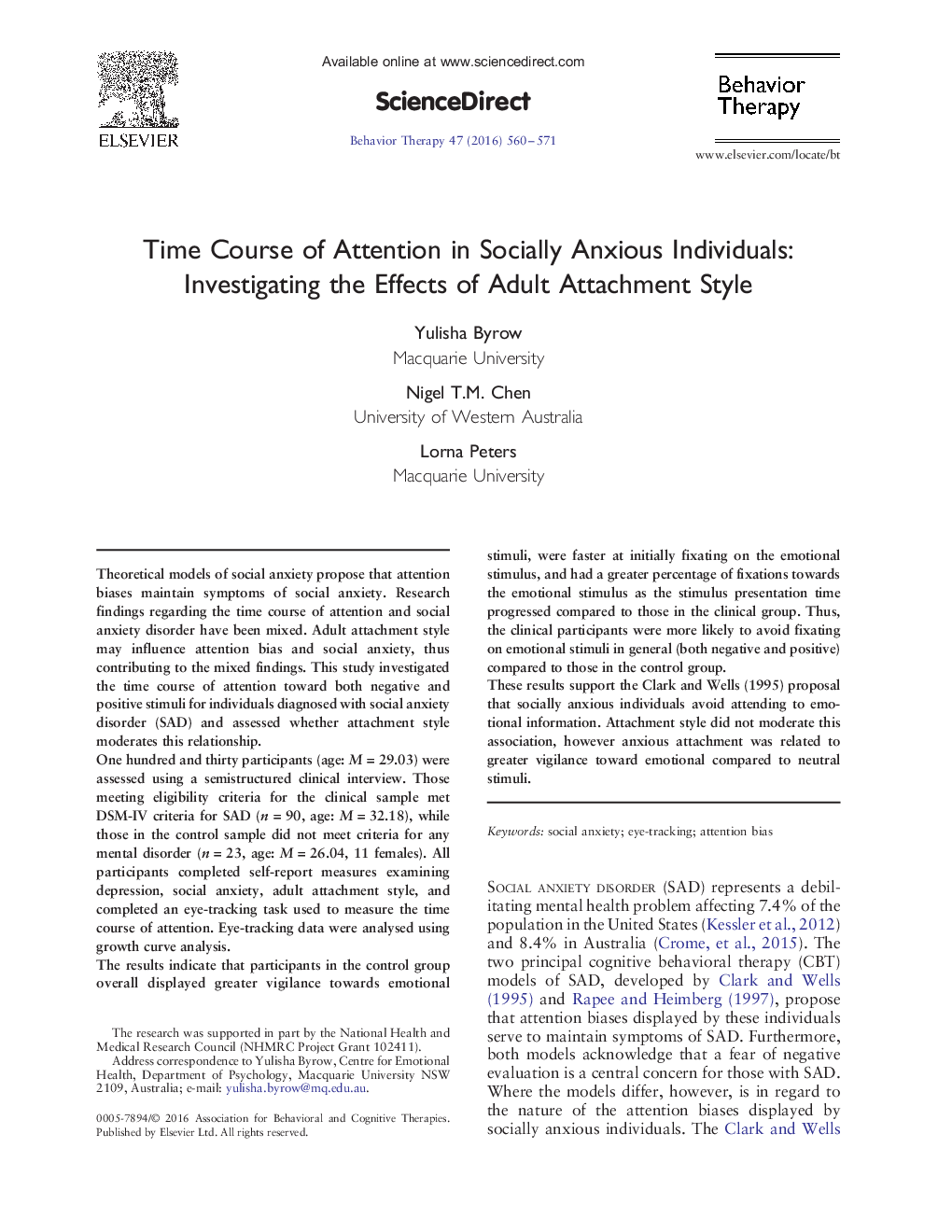| کد مقاله | کد نشریه | سال انتشار | مقاله انگلیسی | نسخه تمام متن |
|---|---|---|---|---|
| 901154 | 1370245 | 2016 | 12 صفحه PDF | دانلود رایگان |
• This study used eye-tracking to measure attention biases in social anxiety disorder
• Clinical participants avoided attending to emotional stimuli compared to controls
• The results support the Clark and Wells (1995) model of social anxiety disorder
• Attachment style did not moderate this association
• Anxious attachment was related to greater vigilance for emotional stimuli
Theoretical models of social anxiety propose that attention biases maintain symptoms of social anxiety. Research findings regarding the time course of attention and social anxiety disorder have been mixed. Adult attachment style may influence attention bias and social anxiety, thus contributing to the mixed findings. This study investigated the time course of attention toward both negative and positive stimuli for individuals diagnosed with social anxiety disorder (SAD) and assessed whether attachment style moderates this relationship.One hundred and thirty participants (age: M = 29.03) were assessed using a semistructured clinical interview. Those meeting eligibility criteria for the clinical sample met DSM-IV criteria for SAD (n = 90, age: M = 32.18), while those in the control sample did not meet criteria for any mental disorder (n = 23, age: M = 26.04, 11 females). All participants completed self-report measures examining depression, social anxiety, adult attachment style, and completed an eye-tracking task used to measure the time course of attention. Eye-tracking data were analysed using growth curve analysis.The results indicate that participants in the control group overall displayed greater vigilance towards emotional stimuli, were faster at initially fixating on the emotional stimulus, and had a greater percentage of fixations towards the emotional stimulus as the stimulus presentation time progressed compared to those in the clinical group. Thus, the clinical participants were more likely to avoid fixating on emotional stimuli in general (both negative and positive) compared to those in the control group.These results support the Clark and Wells (1995) proposal that socially anxious individuals avoid attending to emotional information. Attachment style did not moderate this association, however anxious attachment was related to greater vigilance toward emotional compared to neutral stimuli.
Journal: Behavior Therapy - Volume 47, Issue 4, July 2016, Pages 560–571
